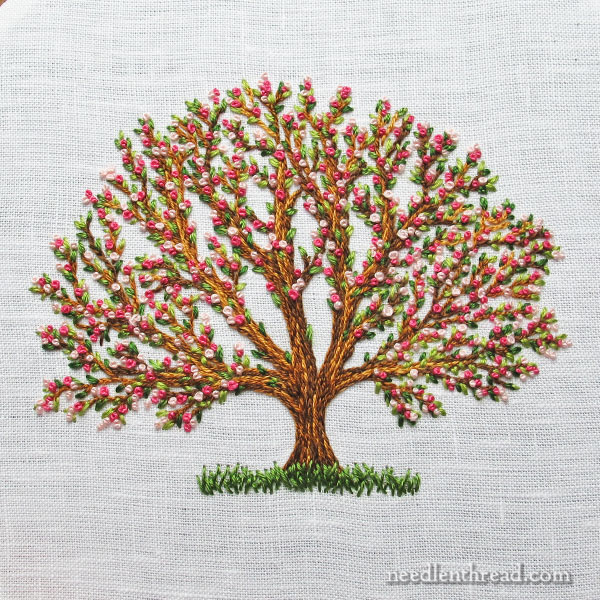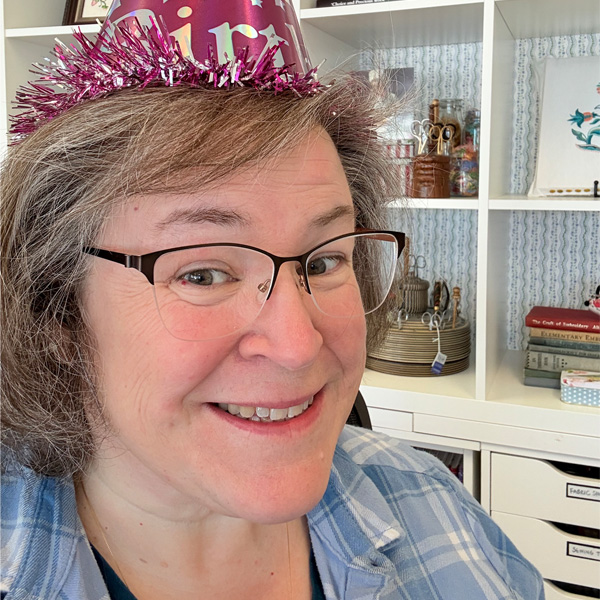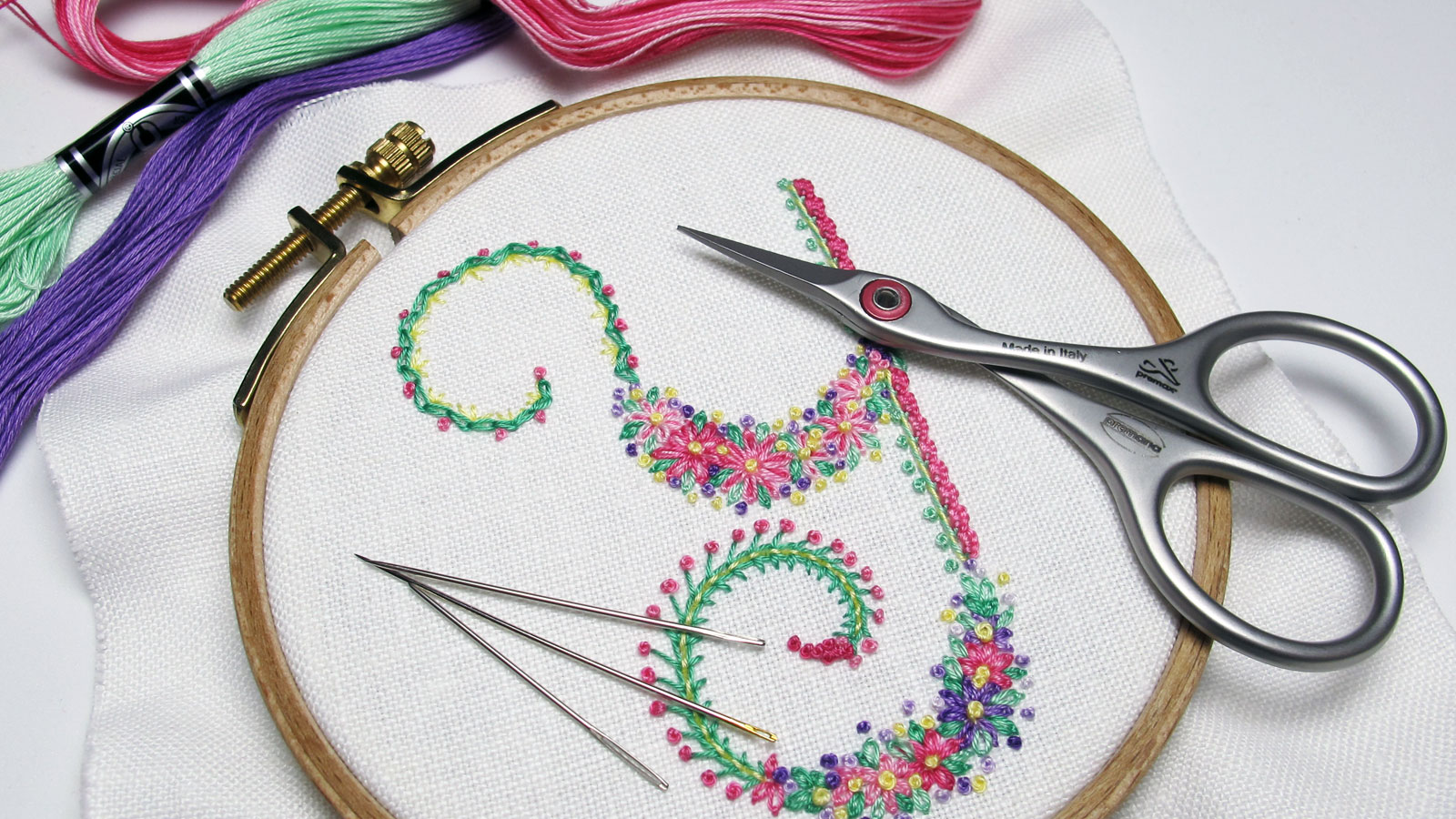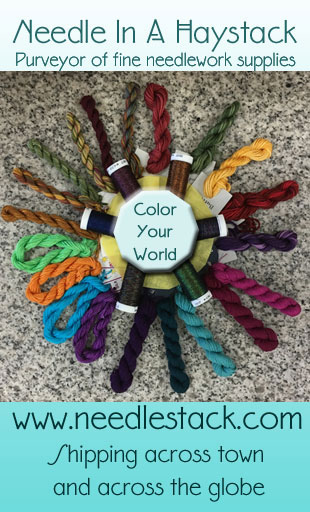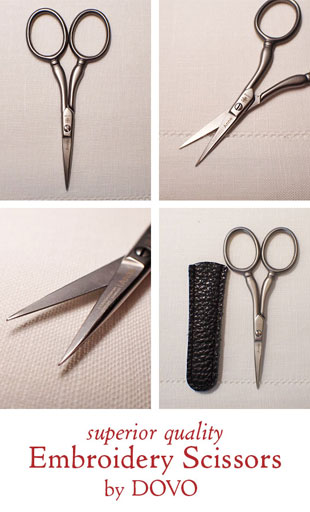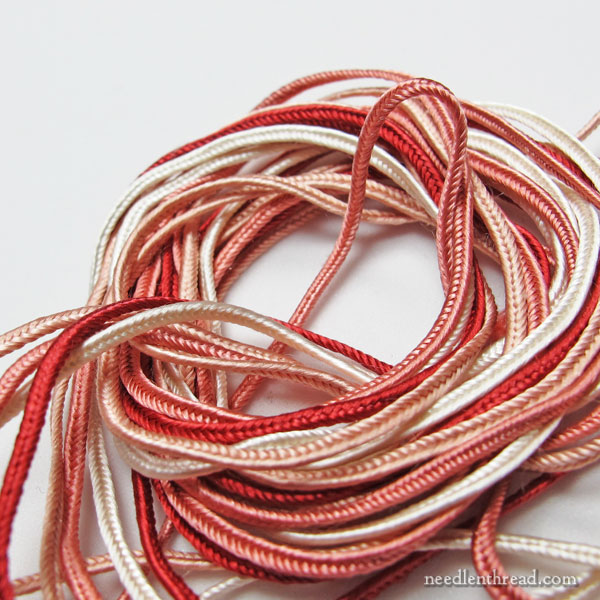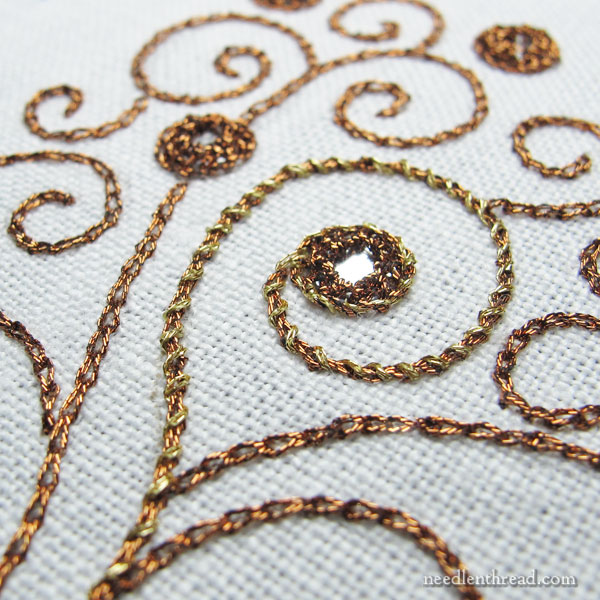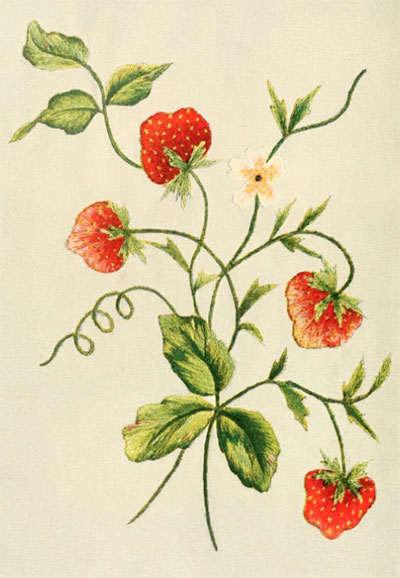For many, many, many years, there’s been a subject that’s circulated in the embroidery world that I’ve never bothered to write about here on Needle ‘n Thread (on the blog), because it is a debate that I don’t want to have.
It’s not that I’m wishy-washy; it’s not that I won’t stand up for my beliefs. It’s just one of those topics that I figure isn’t worth debating over. It’s not a matter of principle; it’s not a matter of life-or-death, right-or-wrong, just-or-unjust. In life, you pick your fights. And arguments over embroidery thread, when there are much greater issues to occupy one’s mental energy with, just don’t seem that important to me.
Still, I’ve been recently barraged with the question because the topic came up on a couple embroidery websites recently, and I’ve been asked about it off and on over the years because it comes up in classes, guild groups, books and conversations now and then. I can’t tell you how many emails I’ve written on the subject!
And so, this morning, once and for all, I’m going to write about the question here on Needle ‘n Thread: you’ll know exactly what I think of the subject and finally, I’ll be able to reply to inquiries about it with a direct link to this article. (Saves the fingers, you know…)
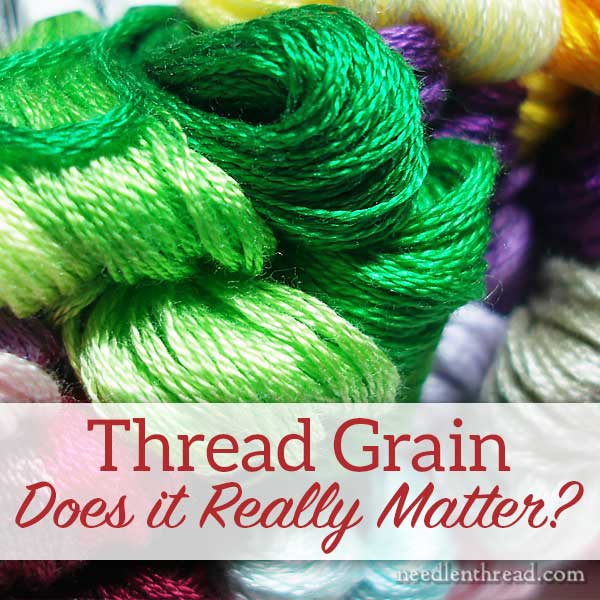 Continue reading “Thread Talk: The Debate I Don’t Want to Have”
Continue reading “Thread Talk: The Debate I Don’t Want to Have”
